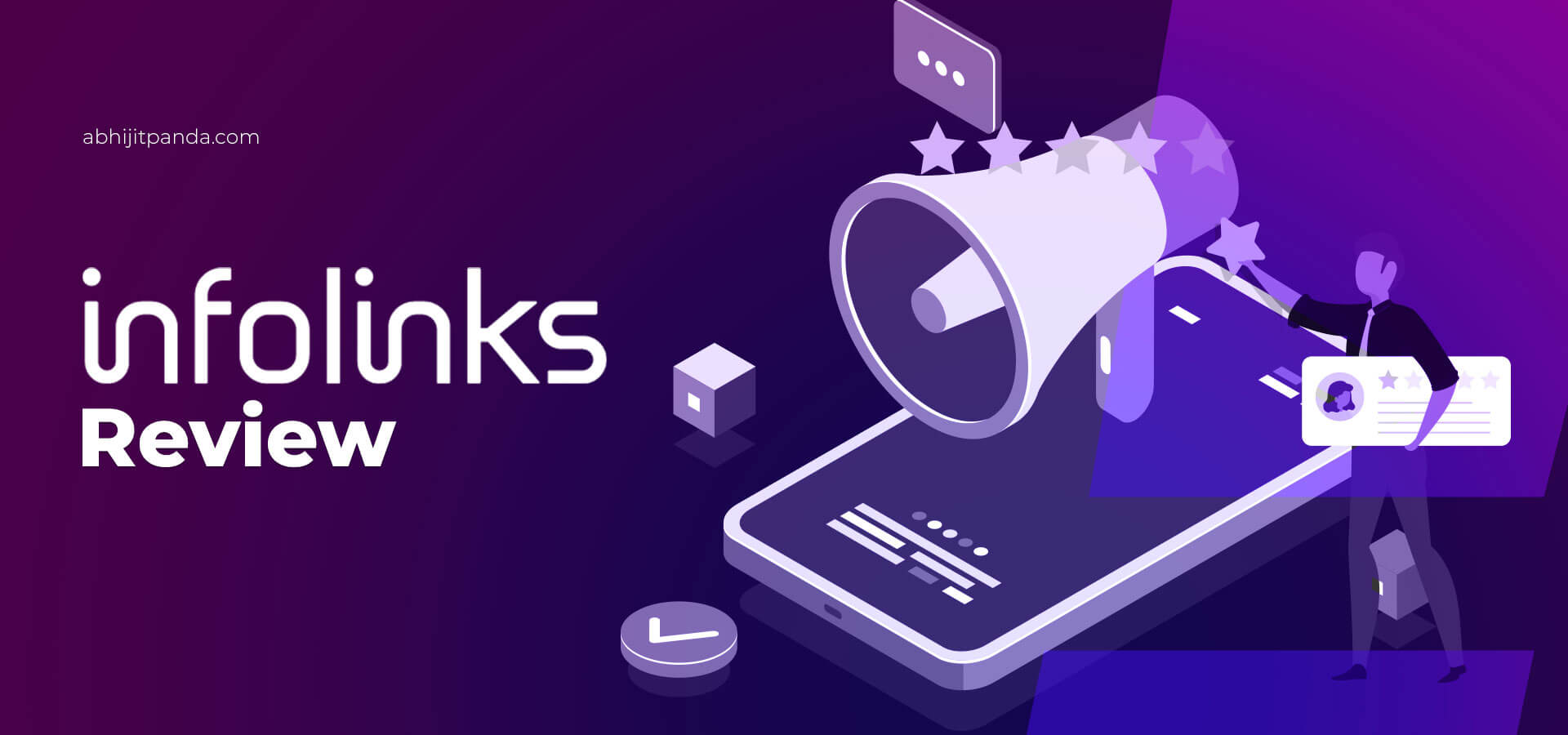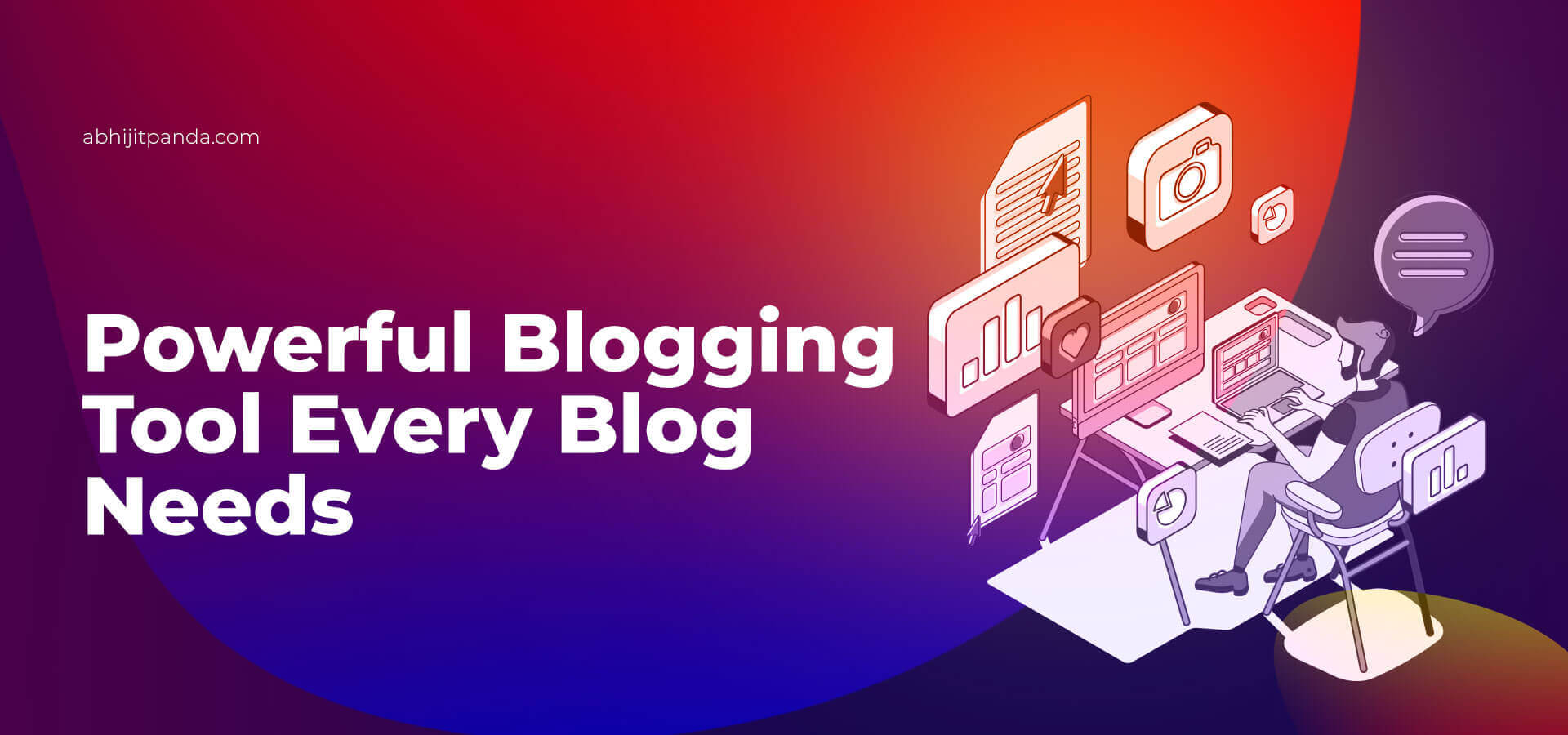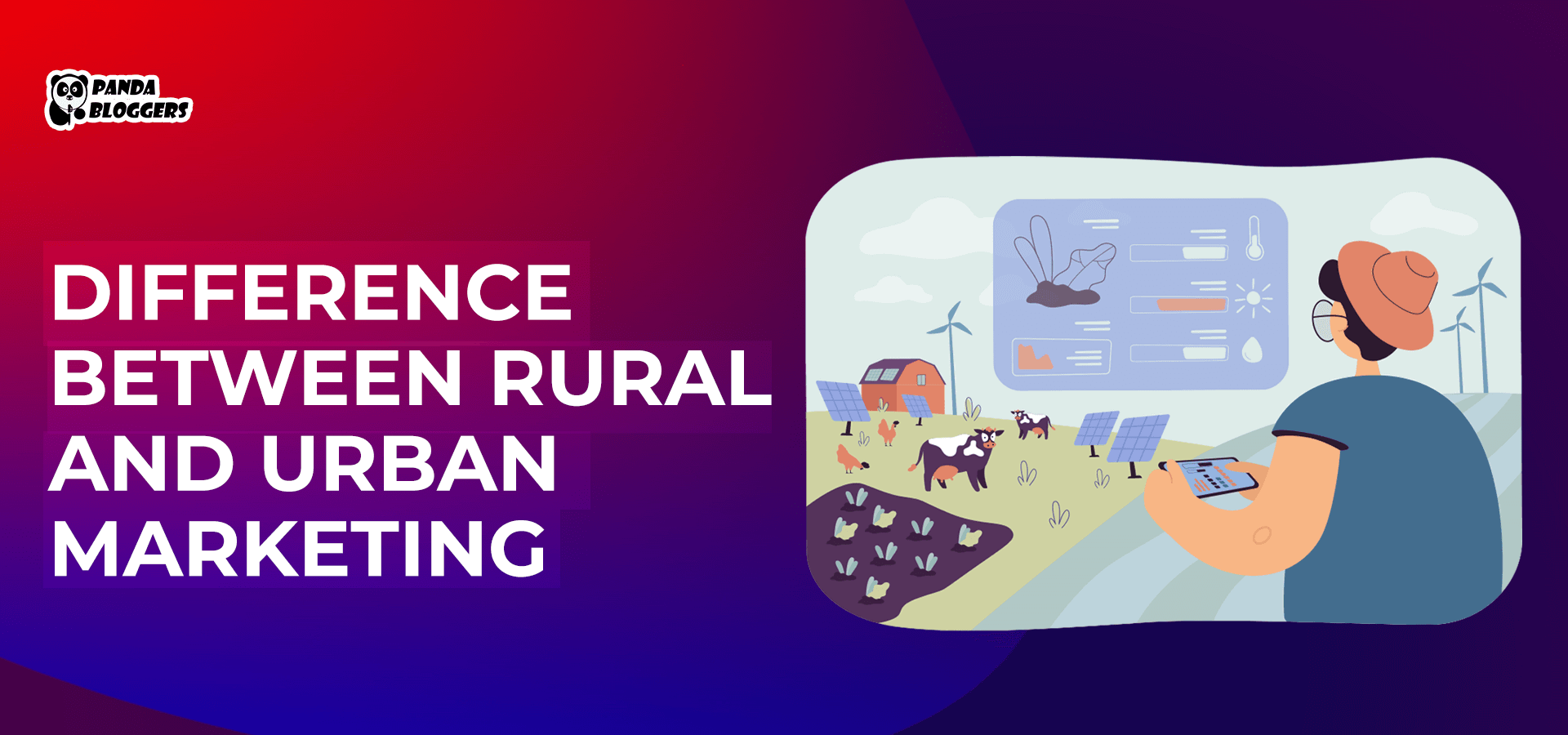 Infolinks Review
Infolinks Review
The online ad networks help bloggers and content publishers earn recurring income by placing ads on their blogs. Bloggers and content publishers can monetize their blogs using a wide range of ad networks. Infolinks is one of the leading and trusted ad networks. At present, large companies like Facebook, Amazon, Microsoft, and eBay run ads on Infolinks. In this blog post, I will post the Infolinks review, how good it is as an ad network, and how it compares with other popular ad networks.
In addition to being considered as one of the Google AdSense alternatives for a small website, Infolinks is one of the most popular advertisement platforms for new bloggers. Infolinks monetizes blogs by displaying intent-based ads on the web pages. The intent-based ads integrate seamlessly with the website content. Here are some interesting numbers about Infolinks:
Infolinks has a network of 350,000 websites worldwide.
It reaches 240 million monthly unique users.
The platform delivers 1.5 billion monthly ad views.
It is the 3rd largest publisher marketplace.
Their publishing partners have collectively earned over $100 million from advertising placements.
Also, the bloggers can use the integration code to make the ads appear at the end of the content. The ads further load only after the content is loaded, without affecting the blog post’s loading speed. The content publishers also have the option to monetize the content by running a variety of Infolinks ads. However, bloggers must keep in mind the pros and cons of the Infolinks advertisement platform to monetize their blogs effectively.

Infolinks Review: What Bloggers Must Know about Infolinks Ads While Monetizing Their Content?
Important Features of the Infolinks Advertisement Program
The online ad networks or ad platforms differ from each other primarily in terms of features. Infolinks advertisement is designed with a slew of features that make it different from other ad networks for bloggers. The important features of Infolinks advertisement programs are
Intent-based and real-time ads
Supports real-time and keyword-based ad bidding
An open and trusted ad platform for advertisers and content publishers
Relevant and highly engaging ad units
Runs the world’s third-largest marketplace for content publishers
Ads are approved within 72 hours
Ads do not consume space or affect the website’s loading speed
Supports multiple payment options
A Popular Alternative to Google AdSense
The advertising networks market share table posted on Datanyze suggests that most bloggers and content publishers prefer Google AdSense to other ad networks and platforms. But Infolinks is often described as one of the popular AdSense alternatives for small websites and new bloggers. The bloggers and content publishers must remember that Google AdSense and Infolinks differ from each other in several aspects – Infolinks vs AdSense.
Emphasis:
Both AdSense and Infolinks allow bloggers to run ads regardless of the size of their website traffic. But Google, unlike Infolinks, emphasizes on quality of content. That is why new bloggers find it easier to generate revenue by running Infolinks ads.
Approval Period:
Google AdSense has a longer approval process than Infolinks. Infolinks approves or rejects blogs in 72 hours or 3 days. But Google takes more than 7 days to approve or reject blogs.
Quality of Ads:
The Infolinks ads integrate seamlessly with the content. They further do not affect the website’s loading speed and user experience. However, the quality of the ads is impacted due to inferior keyword scanning algorithms used by Infolinks. On the other hand, Google AdSense improves the quality of the ads consistently across its publishing network.
Traffic and Publishers:
Google AdSense has a wider reach than other ad networks. Infolinks reportedly operates in over 128 countries. But the bloggers can generate and increase revenue only if their blogs get traffic from Europe, the USA, and Canada. Google AdSense enables bloggers to earn revenue by connecting with customers across the world.
Ad Revenue Sharing:
Infolinks shares 65% of ad revenue with content publishers, while Google AdSense shares 51 to 68% of the ad revenue with bloggers. But Infolinks helps bloggers generate more revenue by attracting more website visitors from Western countries.
How to Sign Up and Set Up Infolinks on Your Website
To make your blog post more actionable and beginner-friendly, add a step-by-step section explaining how to sign up and integrate Infolinks.
Step 1:
Go to the official Infolinks website and click on the “Sign Up” button.
Enter your website URL, email, and create a password.
Step 2:
Once your account is approved, you’ll receive a unique ad code.
Copy the code and paste it into your website’s header or footer section.
Step 3:
Use the Infolinks dashboard to customize the ad formats, such as InText, InFold, InTag, and InFrame.
Adjust the ad placement settings to maximize visibility without affecting user experience.
Various Types of Infolinks Ads
Infolinks allows bloggers to choose from cost-per-click (CPC) and cost-per-impression (CPM) advertising options. It displays in-text ads that readers of the blogs can see only when hovering over the link. However, bloggers can generate recurring revenue using a variety of ads supported by Infolinks.
In Article Ads:
The algorithm used by Infolinks displays in article ads only when the readers stay engaged with the blog post or content. The ads can appear in an expanded format between the content. Infolinks displays ads from major brands to generate more revenue for content publishers.
In Text Ads:
The Infolinks algorithms choose and display the relevant in-text ads by scanning the entire content. These ads appear in the form of hyperlinks on the web page. Infolinks displays 12 in-text ads on a single page by default. However, the bloggers must reduce the number of in-text ads to 7 per page to keep the user experience unaffected.
In Fold Ads:
Infolinks displays in-fold ads based on data collected from major search engines. The Infolinks advertisement option displays a wider range of ads to the readers or visitors. But the in-fold ads appear at the bottom of the web page. Hence, they appear more appealing and engaging on computers than on mobile devices. A blogger should opt for in-fold ads only when a large percentage of visitors access the website on their computers.
In Tag Ads:
The in-tags ads are more customizable than other forms of Infolinks ads. The algorithms used by Infolinks display the in-tag ads by identifying the most relevant keywords in the content. But the bloggers cannot persuade readers to click on the in-tag ads without customizing them according to the web page’s theme.
In Frame Ads:
The in-frame ads affect the web page’s loading speed by displaying ads in the form of banner ads on both sides of the content. The bloggers should opt for in-frame ads only if the blogging website has adequate screen space to accommodate frames on both sides.
In Screen Ads:
Infolinks is yet to roll out this new type of ad to content publishers. However, the beta versions of in-screen ads suggest that the option will display ads that are both relevant and viewable on various devices. Also, Infolinks will allow bloggers to customize the in-screen ads according to the current position of a reader, entry, exit, and engagement.
Infolinks Requirements
To be eligible for Infolinks, websites must meet certain basic requirements. While there is no strict minimum traffic requirement, the platform favors websites with quality content and consistent visitor engagement. Websites must also be compliant with Google’s policies, contain original content, and cater to an audience that aligns with advertisers’ needs. Infolinks is particularly effective for text-heavy sites such as blogs, news portals, and educational platforms.
Key Features of Infolinks
1. Multiple Ad Formats
Infolinks offers diverse ad formats designed to enhance user engagement while maintaining website aesthetics. The details are given above.
2. Easy Integration
Signing up and integrating Infolinks is straightforward. You simply insert a JavaScript code into your website, and the ads start appearing instantly.
3. Contextual and Intent-Based Targeting
Infolinks analyzes website content and user behavior to display highly relevant ads. This increases engagement and click-through rates (CTR), which can improve revenue.
4. Compatible with Other Ad Networks
Unlike some ad platforms, Infolinks can be used alongside Google AdSense and other advertising networks without violating policies, making it a great additional revenue stream.
5. Global Coverage
Infolinks serves advertisers and publishers worldwide, ensuring high fill rates and diversified ad demand.
Pros and Cons of Infolinks
Infolinks Review: Eligibility Criteria to Run Infolinks Ads
The Infolinks ad platform allows bloggers to target without considering the language, size of website traffic, and the number of page views. However, it restricts bloggers and content publishers from posting violent content, hate-related content, pornographic content, and content that violates intellectual property (IP) rights. Bloggers need to comply with the latest guidelines and policies set by Infolinks to run ad campaigns. Infolinks still holds the right to approve or decline an application without mentioning any reason.
Payment Options and Payout
Unlike other leading ad networks, Infolinks supports multiple payment options. It allows bloggers to receive payment through direct bank wire transfers, electronic checks, or leading online payment processors like PayPal, Western Union, and Payoneer. But Infolinks has set the minimum payout threshold at $50. The global ad platform released payments every 45 days. The bloggers can track and measure the revenue earned by them using the dashboard provided by Infolinks.
Things to Consider
Infolinks is considered one of the popular ad networks for small websites and new bloggers. However, the bloggers must remember that the Infolinks will not help them monetize blogs by targeting Asian traffic. In addition to providing multiple advertisement options, Infolinks also supports multiple payment options. But the ad network has set the minimum payout at $50. Hence, the bloggers will receive payment only when the ad revenues exceed the minimum threshold of $50.
Infolinks Review: Is Infolinks Worth Using?
Infolinks is an excellent option for small to medium-sized publishers looking to monetize their content without relying solely on traditional display ads. While it may not generate as much revenue as Google AdSense for high-traffic sites, it serves as a valuable additional income stream.
Who Should Use Infolinks?
✅ New bloggers who don’t meet AdSense’s strict approval criteria.
✅ Websites with high-text content (news sites, blogs, educational platforms).
✅ Publishers looking for non-intrusive monetization methods.
Who Should Look Elsewhere?
Websites with minimal content (Infolinks relies on text-based content for ad placements). Websites are already making high revenue from AdSense or premium ad networks.
Infolinks Alternatives: How It Compares with Other Platforms
Infolinks vs Google AdSense
Google AdSense is one of the most popular website monetization platforms, often compared with Infolinks due to its higher earning potential. AdSense offers display, native, and video ads, making it ideal for bloggers, content creators, and website owners seeking reliable ad revenue. Unlike Infolinks, which focuses on in-text and in-frame ads, AdSense provides visually appealing and customizable ad formats that blend seamlessly with content. Here is a video guide to Google AdSense.
In terms of revenue, AdSense generally offers higher CPC (Cost Per Click) rates, especially for websites with traffic from tier-1 countries (US, UK, Canada). However, AdSense has stricter approval criteria, making it harder for new websites to qualify. In contrast, Infolinks has a more lenient approval process and works well for low to medium-traffic websites. While AdSense is better suited for websites with substantial traffic, Infolinks can be a profitable alternative for smaller or niche sites seeking simpler monetization.
Infolinks vs Ezoic
Ezoic is another popular AdSense alternative that offers AI-driven ad optimization, making it a strong competitor to Infolinks. Unlike Infolinks, which focuses on text-based and contextual ads, Ezoic uses machine learning algorithms to optimize ad placement, size, and density for higher revenue potential. This platform is particularly beneficial for medium to large websites as it offers higher RPM (Revenue per Mille) through intelligent ad testing. Here is a detailed Ezoic review.
While Infolinks is easier to set up and requires less traffic, Ezoic requires a minimum of 10,000 monthly visitors to qualify. However, Ezoic often delivers higher earnings due to its dynamic ad optimization technology. In terms of user experience, Ezoic’s ads are typically more visually appealing and less intrusive, whereas Infolinks’ in-text ads can sometimes disrupt readability. For websites with moderate to high traffic, Ezoic provides better long-term earning potential, but Infolinks remains a viable option for smaller sites.
Infolinks vs Media.net
Media.net, powered by Yahoo! and Bing, is a direct competitor to AdSense and Infolinks, offering contextual and native ads. Unlike Infolinks, which primarily uses in-text and in-frame ads, Media.net focuses on highly targeted contextual ads that match the content of the page. This makes Media.net a great option for niche blogs and content-heavy websites, as it displays relevant ads based on the page’s topic.
When it comes to revenue, Media.net often offers higher RPMs for traffic from tier-1 countries, making it more lucrative for websites with significant US and UK-based audiences. However, Media.net’s approval process is more selective compared to Infolinks, making it harder for smaller websites to qualify. In terms of user experience, Media.net ads are less intrusive, while Infolinks’ in-text and in-tag ads can sometimes impact readability. For global websites with diverse traffic sources, Infolinks offers more flexibility, whereas Media.net is more profitable for US-centric audiences.
Infolinks vs PropellerAds
PropellerAds is a popular network offering formats like push notifications, popunders, and native ads, which are known for aggressive monetization but sometimes compromise user experience. In contrast, Infolinks focuses on non-intrusive ad formats such as in-text and in-fold units, which blend more naturally into content. Here is a detailed review of PropellerAds.
While PropellerAds can generate quick revenue, especially for traffic from diverse geographies, Infolinks is generally better for publishers who want to keep their site design cleaner and avoid intrusive ads.
Best For: PropellerAds suits publishers prioritizing high fill rates across global traffic; Infolinks is ideal for those seeking user-friendly monetization with minimal disruption.
Infolinks vs RevContent
RevContent is a native advertising platform specializing in high-quality content recommendations that appear at the end of articles or within widgets. It works best for sites with strong content and significant traffic volume, especially in premium markets. In contrast, Infolinks monetizes directly within the content itself, making it accessible even for smaller publishers with limited traffic. While RevContent can deliver better CPMs for established publishers, Infolinks is more beginner-friendly and requires less effort to integrate.
Best For: RevContent suits established content-heavy sites with steady traffic; Infolinks is better for smaller blogs looking for easy, low-barrier monetization.
Tips to Maximize Your Earnings with Infolinks
To make your Infolinks review more valuable, add practical tips on increasing revenue:
-
Optimize Ad Placement: Position InText and InFold ads near high-traffic content sections, such as product reviews or CTA buttons.
-
Use Multiple Ad Types: Combine InText, InTag, and InFrame ads to maximize visibility without overwhelming the reader.
-
Focus on High-Performing Pages: Use Google Analytics to identify top-performing pages and increase ad density there.
-
Test and Tweak: Experiment with different ad colors, placements, and sizes to optimize CTR.
-
Improve Website Speed: Ensure your website loads quickly, as slow pages can reduce ad impressions and revenue.
Recent Trends & Platform Updates (2025–26)
Infolinks has continued to evolve over the past few years, making several upgrades designed to help publishers maximize revenue while keeping user experience in focus. One of the most notable improvements is the integration of AI-powered keyword scanning, which ensures ads are more contextually relevant and less intrusive. The network has also strengthened its ad quality filters and rolled out mobile-first ad units, giving publishers better performance across different devices.
According to recent publisher reports, average RPMs in Tier-1 countries have increased by 5–10%, largely due to smarter demand matching and expanded advertiser partnerships. Another major step forward is the introduction of header bidding compatibility, which allows Infolinks to compete in real time with other ad networks. This turns Infolinks from a backup option into a genuine revenue driver for publishers who already use multiple monetization platforms.
Alongside these upgrades, Infolinks has also implemented stricter content compliance policies and greater transparency in impression tracking. For site owners, this means maintaining high-quality, policy-compliant content is more important than ever to ensure consistent approval and long-term earnings stability.
Conclusion:
Infolinks helps bloggers and content publishers earn recurring income by running a variety of intent-based ads. But the bloggers must not forget that, like other ad networks, Infolinks also has its pros and cons. Also, Infolinks keeps updating its ads and products from time to time. Hence, bloggers must choose the right type of Infolinks ads to generate income regularly.
I will look forward to your comments. Did I miss anything major in my Infolinks review? Please let me know by putting your comments below.
We refreshed the content of the blog post in October 2025 to make it more suitable for our audience.









Leave a Reply